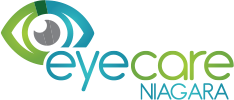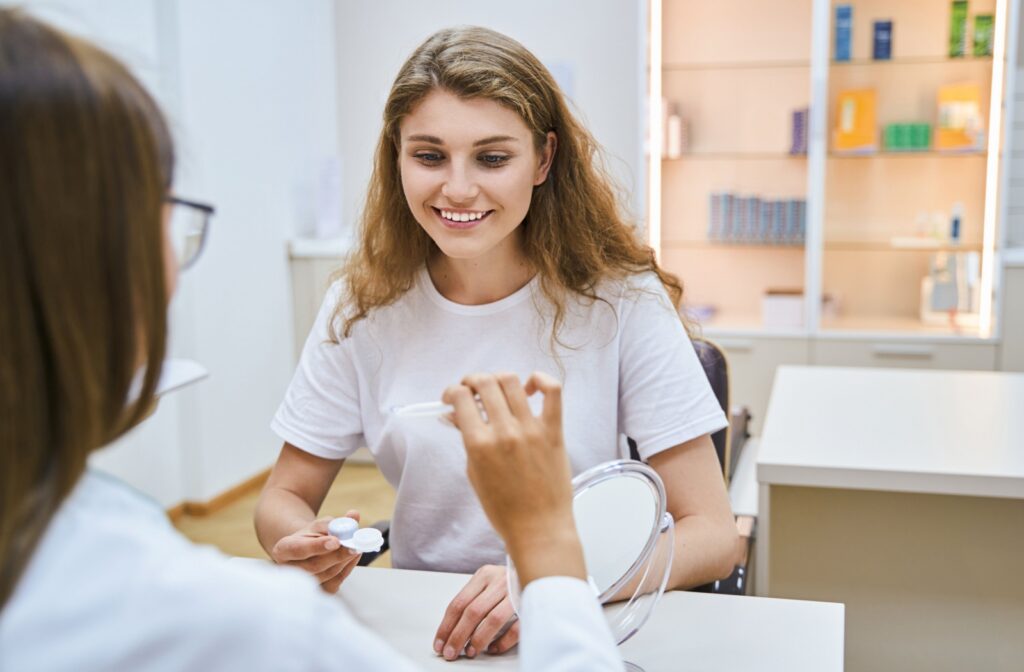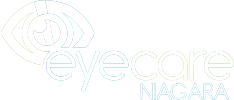Contact lenses offer a convenient and often more comfortable alternative to glasses for many people. However, getting contact lenses isn’t as simple as picking them off the shelf. A specialized contact lens eye exam is essential to ensure that your lenses fit properly, correct your vision adequately, and maintain the health of your eyes. Here’s what you can expect during a contact lens eye exam.
- Comprehensive eye examination
- Contact lens consultation
- Measuring your eyes
- Fitting the contact lenses
- Instruction and training
- Follow-up appointment
The Importance of a Contact Lens Exam
A contact lens exam is crucial for ensuring both the health of your eyes and the effectiveness of your vision correction. Unlike a standard eye exam, a contact lens exam includes specific tests and measurements to determine the appropriate size, shape, and type of contact lenses suited for your eyes.
This thorough evaluation helps prevent potential complications such as infections, corneal abrasions, or dry eyes, which can result from poorly fitted lenses.
Additionally, it allows the eye care professional to address any unique vision needs and provide guidance on proper lens care, ensuring long-term comfort and eye health. Regular contact lens exams are essential for updating prescriptions and maintaining optimal vision and eye well-being.
A Step-By-Step Guide
Here is a step-by-step what to expect for an contact lens exam:
1. Comprehensive Eye Examination
Before diving into the specifics of contact lenses, your optometrist will conduct a thorough eye exam. This step is crucial for assessing your overall eye health and determining your precise prescription. Expect the following:
- Visual Acuity Test: Using an eye chart, the doctor will measure how well you see at various distances.
- Refraction Assessment: This involves using a phoropter to determine your exact prescription for glasses or contact lenses.
- Eye Health Evaluation: The doctor will check for any eye conditions or diseases, such as glaucoma or cataracts, using various instruments and techniques.
2. Contact Lens Consultation
After your general eye health and vision have been assessed, the optometrist will discuss your suitability for contact lenses. Factors considered include:
- Lifestyle and Preferences: Your daily activities and how often you plan to wear contact lenses (daily, weekly, or monthly).
- Previous Experiences: If you’ve worn contact lenses before, any issues or preferences you had with those lenses.
- Specific Needs: Any particular vision needs, such as lenses for astigmatism, bifocal lenses, or coloured lenses.
3. Measuring Your Eyes
For contact lenses to be comfortable and effective, they must fit your eyes correctly. The optometrist will take precise measurements, such as:
- Corneal Curvature: Using a keratometer or corneal topographer, the doctor measures the curvature of your cornea to ensure the lens fits well.
- Pupil and Iris Size: These measurements help in selecting the correct lens size.
- Tear Film Evaluation: The doctor assesses your tear film to determine if you have dry eyes, which can affect lens comfort and health.
4. Fitting the Contact Lenses
Once measurements are taken, the optometrist will select trial lenses for you to try. During the fitting:
- Inserting the Lenses: The doctor will guide you through inserting and removing the lenses.
- Initial Comfort Check: You’ll wear the trial lenses for a short period to assess their comfort and fit.
- Vision Assessment: Your vision with the trial lenses will be tested to ensure they provide the correct correction.

5. Instruction and Training
If you’re new to contact lenses, the optometrist or a trained technician will provide detailed instructions on several key aspects to ensure your transition to wearing contacts is smooth and successful.
Here is what you can expect the conversation will cover:
- Inserting and Removing Lenses: Hands-on training to make you comfortable with handling the lenses.
- Lens Care and Hygiene: Guidance on cleaning, storing, and handling the lenses to maintain eye health and lens longevity.
- Wear and Replacement Schedule: Instructions on how long to wear the lenses each day and when to replace them.
6. Follow-Up Appointment
A follow-up visit is often scheduled a week or two after the initial fitting. During this appointment, the optometrist will:
- Check Fit and Comfort: Ensure the lenses are fitting properly and are comfortable for daily wear.
- Assess Vision: Confirm that the lenses are providing the expected vision correction.
- Address Any Issues: Discuss any problems or discomfort you may have experienced and make necessary adjustments.
A Path Towards Clearer Vision
A contact lens eye exam is a thorough and essential process to ensure that you receive the best possible vision correction and comfort from your lenses. By understanding what to expect, you can approach your exam with confidence and be well on your way to enjoying the freedom and convenience that contact lenses offer.
Remember, regular follow-ups and proper lens care are some key components to maintaining healthy eyes and optimal vision, book an appointment with Eyecare Niagara in St. Catharines, Ontario today!




